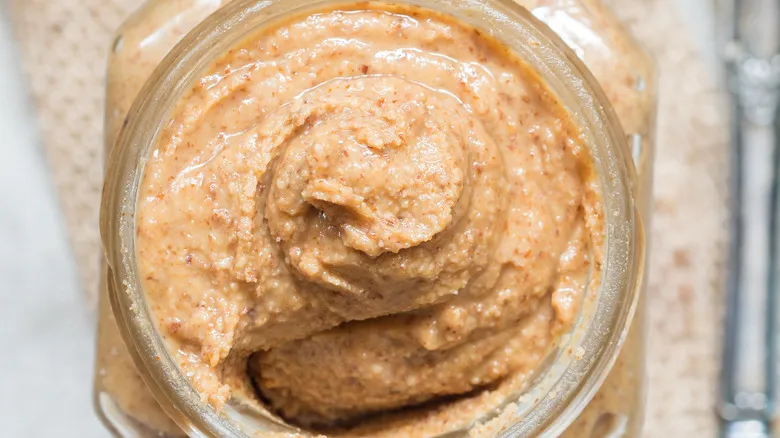Saving lemons only for lemon-based desserts

You might believe that lemon is only suited for citrus-focused treats like lemon meringue pie and lemon bars, but think about the numerous other fruit desserts that could benefit from a splash of acidity. Strawberry cake, blueberry biscuits, and raspberry pie all embrace a hint of lemon. In fact, we've long advocated that lemon curd enhances berry pie beautifully, and that same citrusy brightness can be achieved with just a tablespoon or two of lemon juice or a teaspoon of freshly grated lemon zest mixed into a filling or batter. A lemon glaze would also be an incredible addition to any berry-filled muffin or scone.
Then there are desserts that unexpectedly benefit from lemon as a delightful enhancement. A rich ricotta cheesecake gains a sophisticated flair when lemon zest is incorporated into the graham cracker crust. Creamy rice pudding or even a luxurious crème brûlée appreciates that acidity to balance out the sweetness. Once you recognize the potential that lemon brings to any dessert, the possibilities are truly limitless.
Using lemon juice when vinegar would work better
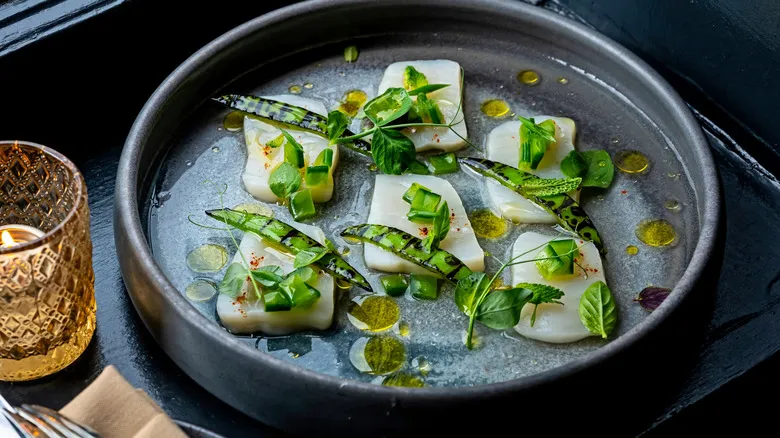
Indeed, there are occasions when lemon juice can detract from the overall quality of a dish. As chef Danielle Alvarez points out, "In many cases, if you're seeking acidity, vinegar is often a better choice." This is particularly true for certain soups and stews, such as a creamy bisque, which benefits more from a sharp sherry vinegar than a splash of lemon juice. Additionally, lemon juice has a unique flavor, whereas vinegar offers a more neutral acidity. If a dish has a robust flavor that needs to be preserved, it's wise to choose vinegar, as lemon juice may dominate the taste.
There are also instances where lemon juice can be used, but caution is necessary. This is especially relevant for crudo, a raw seafood dish typically dressed with oil and an acid, usually citrus juice or vinegar. When lemon juice is added, crudo can quickly transform into ceviche, as the acidity will "cook" the seafood. To safeguard your raw seafood, consider coating it in olive oil before adding the lemon juice.
Forgetting to treat lemon like a seasonal fruit

What’s the most frequent error cooks make with lemons? Chef Danielle Alvarez points out that many overlook the fact that this kitchen staple is actually a seasonal fruit. With its peak season spanning from winter to early spring, lemons become incredibly sweet and ripe, allowing for the entire fruit to be utilized in recipes. "During that time of year... I chop them up whole, zest and all," she explains. She particularly enjoys using whole lemon segments to whip up an extraordinary lemony brown butter sauce, a recipe featured in her cookbook "Always Add Lemon."
Regarding the parts of the lemon often discarded, Alvarez notes that the seasonal sweetness can even mitigate the usual bitterness of the pith. This enables her to incorporate whole lemons into her sauces, salads, and more, reducing the need for extensive peeling and squeezing. Another advantage of using in-season lemons is their superior flavor, characterized by intensely aromatic rinds and well-balanced juice. When lemons are out of season, Alvarez takes care to compensate for their less-than-ideal quality by adding sweetness to offset the extra sourness and meticulously zesting the rind to avoid any bitter pith.
Not using the whole lemon for your pie

When it comes to utilizing the entire lemon in your culinary creations, why not try your hand at a traditional lemon pie using the whole fruit? This baking tip is inspired by an old Shaker lemon pie recipe I experimented with, which advises bakers to macerate thinly sliced lemons before transforming them into a wonderfully fragrant filling. Believed to have originated from the Ohio Shakers, a 19th-century religious group, this pie emphasizes the importance of minimizing waste in the baking process (aside from the seeds, of course).
In contemporary recipes, this approach is similar to the blender lemon pie method, where eggs, sugar, butter, a splash of vanilla, and whole lemons are blended into a custard filling ready for baking. Both techniques produce a pie that is not only tangy but also has a floral quality to its lemon flavor, thanks to the generous use of the rind. It's advisable to try this method when lemons are in season and at their sweetest. Opting for a seedless variety can also save you some prep time. Beyond traditional pies, think about applying this whole lemon baking technique to other treats like slab pies, hand pies, or even homemade lemon pop tarts.
Sleeping on Meyer and Cedro Lemons

Many grocery shoppers often overlook the wide variety of lemons available in stores. For chef Danielle Alvarez, however, Meyer lemons are the ultimate choice. She first discovered this unique citrus while cooking in California and has been a fan ever since. As a hybrid, Meyer lemons are sweet, have a thin skin, and possess minimal of the usual bitter pith. "They strike a perfect balance between aromatic sweetness and tartness," Alvarez explains. She particularly enjoys using them in sweet lemon tarts or incorporating them into a salsa verde (more on that later).
If you're planning a trip to Europe soon, Alvarez also recommends Italian cedro lemons (known as citron in English) as one of the most flavorful varieties. When sliced thinly and served as a lemon carpaccio, they are one of the few lemons that can be eaten raw. In contrast to Meyer lemons, cedro lemons have a significantly larger pith and thicker skin. While the juicy flesh is still sweet and delightful, many chefs value it for its aromatic zest and pith, using it to make salads, candied peels, marmalade, and risotto.
Neglecting to freeze your lemon juice and zest
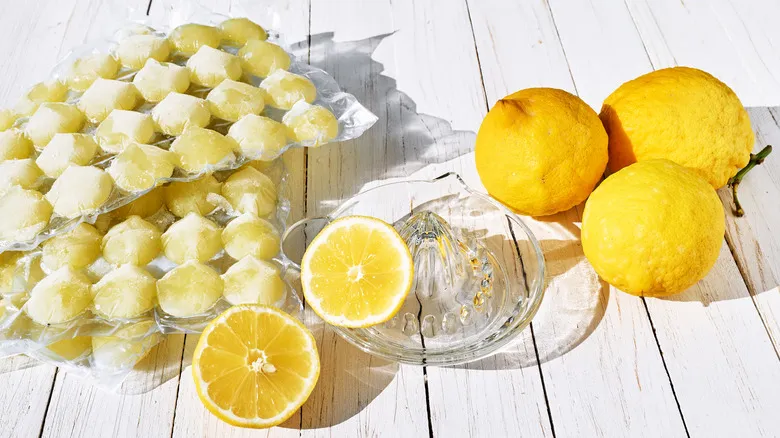
Many people are unaware that both lemon juice and zest freeze exceptionally well, maintaining a relatively fresh taste for several months. In fact, freezing is one of the best methods to preserve leftover lemon juice and zest, allowing you to capture as much of that seasonal brightness as possible. To begin, line an ice cube tray with plastic wrap, then pour tablespoons of fresh lemon juice into the compartments. After they freeze, you can store these lemon juice cubes in a zip-top bag or wrap them in additional plastic wrap. This pre-portioned lemon juice can be kept in the freezer for up to six months.
For the zest, you can use a similar approach by packing teaspoons or tablespoons of fresh zest into an ice cube tray lined with plastic. Remember that finely grated zest works best for this method, but larger strips, like those used in syrups or cocktails, can also be frozen in a zip-top bag. Once grated and frozen, your zest should remain good for about three months in the freezer.
Forgetting to use preserved lemon
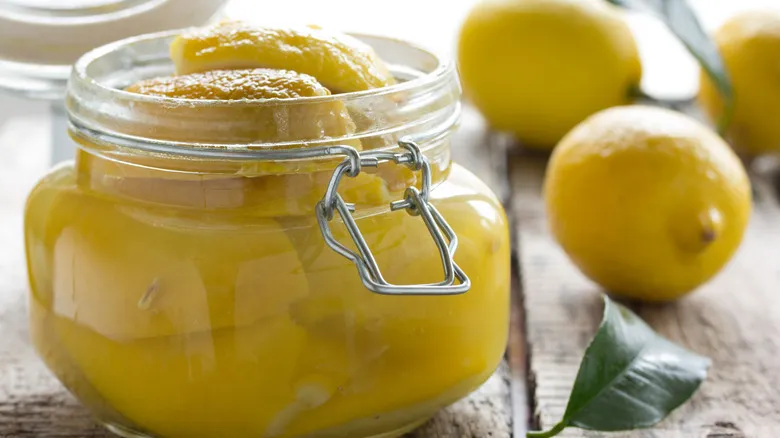
If you haven't yet experienced the delight of preserved lemons, you're in for a culinary surprise. This pickled delicacy consists of lemons that are packed in salt and their own juice, allowing them to brine until they become almost tender. The skin turns incredibly soft and is entirely edible, and these lemons can be stored for an extended period in your pantry. While they are commonly used in North African, South Asian, and Middle Eastern dishes, chef Danielle Alvarez suggests that preserved lemons can enhance nearly any recipe that calls for regular lemon zest. Think of it as a more intense, aromatic version of lemon, with an added hint of salty umami.
To appreciate their impact on your cooking, try incorporating some preserved lemon into your favorite braise or chicken stew. They also add remarkable depth to vinaigrettes, marinades, and pasta sauces, imparting a unique floral-salty flavor that is impossible to replicate. However, since these lemons are cured in significant amounts of salt, it's important to be mindful of how much you use in your dishes. Start with a teaspoon or two, taste the mixture, and then add more if you feel the dish can handle it.
Not adding lemons to your salsa
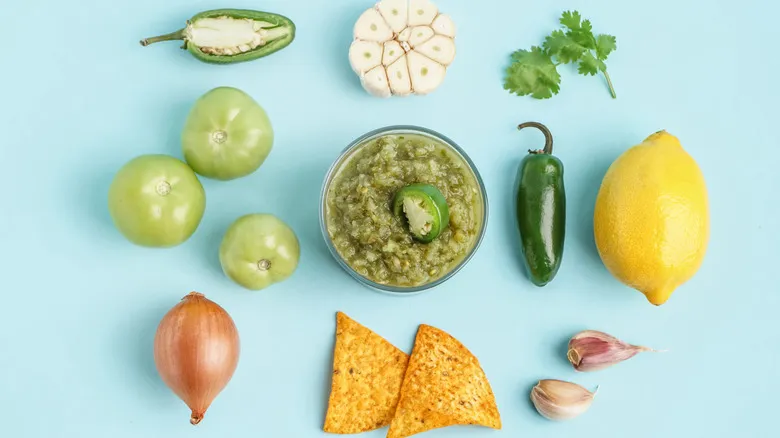
Lemons may seem like an unusual ingredient for salsa, but chef Danielle Alvarez insists that no cook has truly experienced the craft until they've made a vibrant lemony salsa verde. She stumbled upon this recipe during her time at Chez Panisse, the renowned restaurant that pioneered farm-to-table dining. Alvarez describes the process: whole, chopped Meyer lemons are combined with freshly diced shallots and allowed to marinate. After some time, this lemon-shallot mixture is blended with fresh herbs, seasonings, and high-quality olive oil. When drizzled over a fried fish filet, Alvarez asserts that the flavor is nothing short of "a revelation."
While lemon juice has always been a fantastic addition to salsas, limes have typically been the preferred citrus. Cooks should expand their horizons by not only using the juice but also incorporating the tender flesh and zest of a seasonal Meyer lemon to transform the flavor profile of their favorite dips. Consider experimenting with this lemon-centric twist in aromatic pico de gallo or even a rich, creamy guacamole.
Including the lemon pith
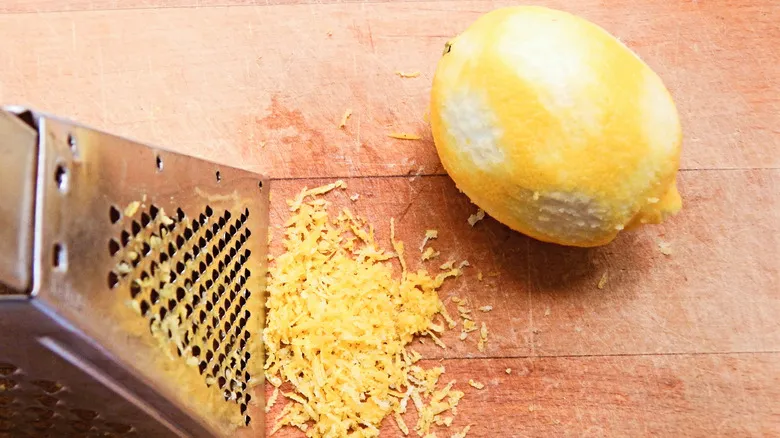
When zesting a lemon, it's important to avoid including any of the white, spongy part of the skin, known as the pith. Why is this crucial? While the pith isn't inherently bitter on its own, the bitterness arises when the pith and zest are combined and crushed together. This mixture releases acids and enzymes that can make the overall flavor quite bitter. If your zest is simply going to be sprinkled on top of a risotto or used to enhance a glaze, you don’t need to be overly concerned about the pith.
However, for most other culinary applications, the zest will undergo a more intense process. It might be muddled in a pitcher of lemonade, whipped into cream cheese frosting, or thoroughly blended with peppercorns to create homemade lemon pepper seasoning. In any of these cases, it's best to minimize the amount of pith involved. It's worth noting that if you're baking or cooking with Meyer lemons, which have very thin skins, the pith may taste better. But in general, it's wise to be cautious of the lemon's pith.
Ignoring the pleasures of lemon confit
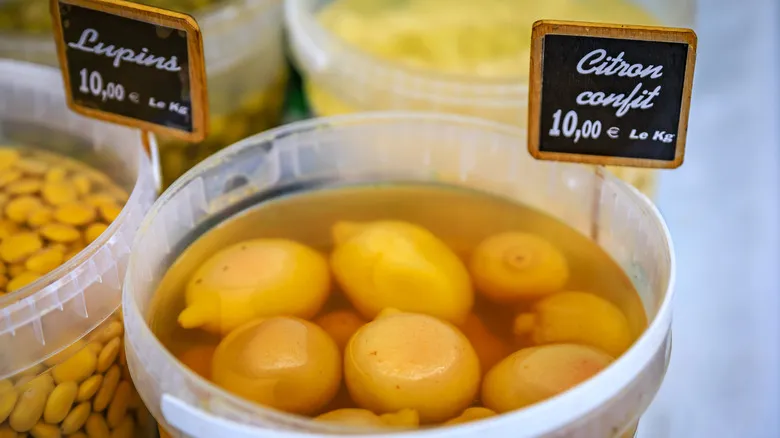
Lemons preserved in olive oil, known as lemon confit, is an often-overlooked condiment in Danielle Alvarez's cookbook. She enjoys using it when she desires a more delicate lemon flavor compared to the stronger taste of salty preserved lemons. "Confit lemon is a lovely way to add lemon [flavor] without overwhelming seasoning," she explains. It pairs wonderfully in salads, as a topping for fish, mixed into a vinaigrette, or even alongside a charcuterie board.
To create your own lemon confit, start by placing sliced, seeded lemons in a Dutch oven, covering them with high-quality olive oil, and gently simmering for about 15 minutes. You can enhance the mixture with additional aromatics, such as whole spices, salt, or sugar, but even on its own, the lemon confit will impress. As a bonus, you can use a similar technique to make lemon-infused olive oil—just strain out the lemon pieces instead of keeping them in the oil.
Juicing your lemons cold

Juicing can often be the most exasperating aspect of making a delicious homemade batch of lemonade or lemon curd. Understanding the best techniques for juicing lemons is essential for maintaining your composure. While many people choose to refrigerate their lemons to extend their freshness, it's advisable to let them reach room temperature before juicing. Why is this important? Cold lemons yield significantly less juice compared to those at room temperature. This is partly because the delicate membranes that contain the lemon juice become firmer in colder conditions.
For those who prefer not to wait for their lemons to warm up naturally, a quick solution is to microwave them for about 20 seconds to help release the juices. However, be cautious—if you exceed 20 seconds, the lemon may explode, so it's best to add time in 5-second intervals.
Still struggling with a particularly stubborn lemon? Try rolling it firmly on a hard surface, such as a granite countertop (this technique is sometimes referred to as the rolling pin method) before juicing. This added pressure can help break down the membranes within the lemon segments and release some of the juice sacs.
Not combining lemon and chocolate

While orange and chocolate often steal the spotlight, Danielle Alvarez believes that those who haven't experienced the combination of lemon and chocolate are truly missing out. Her appreciation for this unique pairing blossomed during a visit to the Australian restaurant Brae. Following a delightful tasting menu, Alvarez was surprised by a lemon chocolate dessert that exceeded all expectations. "It was like a warm chocolate mousse served in a hollowed-out lemon — as if the chef had crafted a beautiful fresh lemon cup for the mousse," she recalls.
What makes this sweet combination so effective? Similar to other citrus fruits like oranges and limes, the acidity of lemon enhances the fruity notes found in chocolate. This effect is particularly pronounced when using high-quality chocolate with a rich cocoa concentration. Generally, darker chocolates work best with lemon, as their cocoa flavor is more complex and bold. In contrast, milk chocolate can be overly sweet for this delicate pairing. While white chocolate may also lean towards sweetness, its neutral flavor profile allows it to complement the lemon undertones without overpowering them.
Neglecting to properly clean your lemons

As Danielle Alvarez points out, many commercially sold lemons are coated with artificial wax to extend their shelf life and protect them from bruising during transport. Ironically, while many citrus fruits naturally produce their own waxy coating, this is often removed during harvesting. Although the artificial wax is completely safe to consume, it's still important to give grocery store lemons a thorough rinse under cold water. This is essential because the rind can harbor bacteria and pesticide residues.
While most people do wash their lemons adequately, they often overlook a vital step: allowing the lemons to dry before zesting. The lemon's porous skin can absorb water during rinsing, making it slippery and more difficult to zest or grate for cooking. If you're still concerned about the wax on store-bought lemons, consider opting for organic or locally grown options. Even better, if your climate permits, think about growing your own lemon tree. "Once you have access to home-grown lemons, you'll discover just how aromatic and amazing they are compared to the waxed varieties available in stores," Alvarez emphasizes.
Recommended

The Technique Anthony Bourdain Used For Perfect Mashed Potatoes
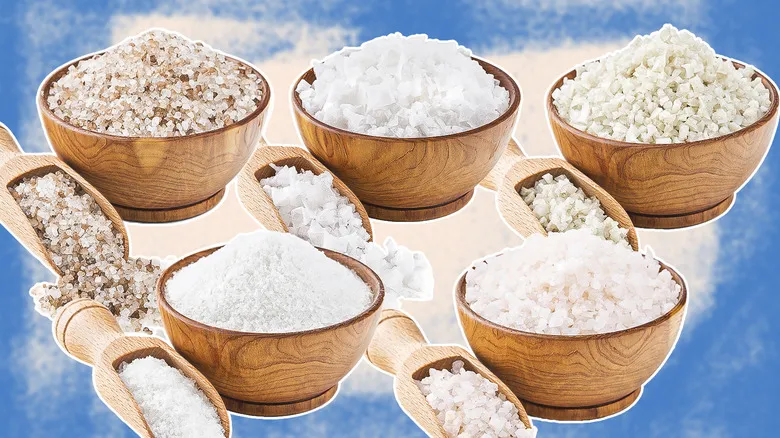
10 Salts Experts Recommend Having In The Kitchen

How To Easily Grate Cheese Without Scratching Your Knuckles

Give Chicken Salad A Kick Of Heat With One Spicy Ingredient
Next up


